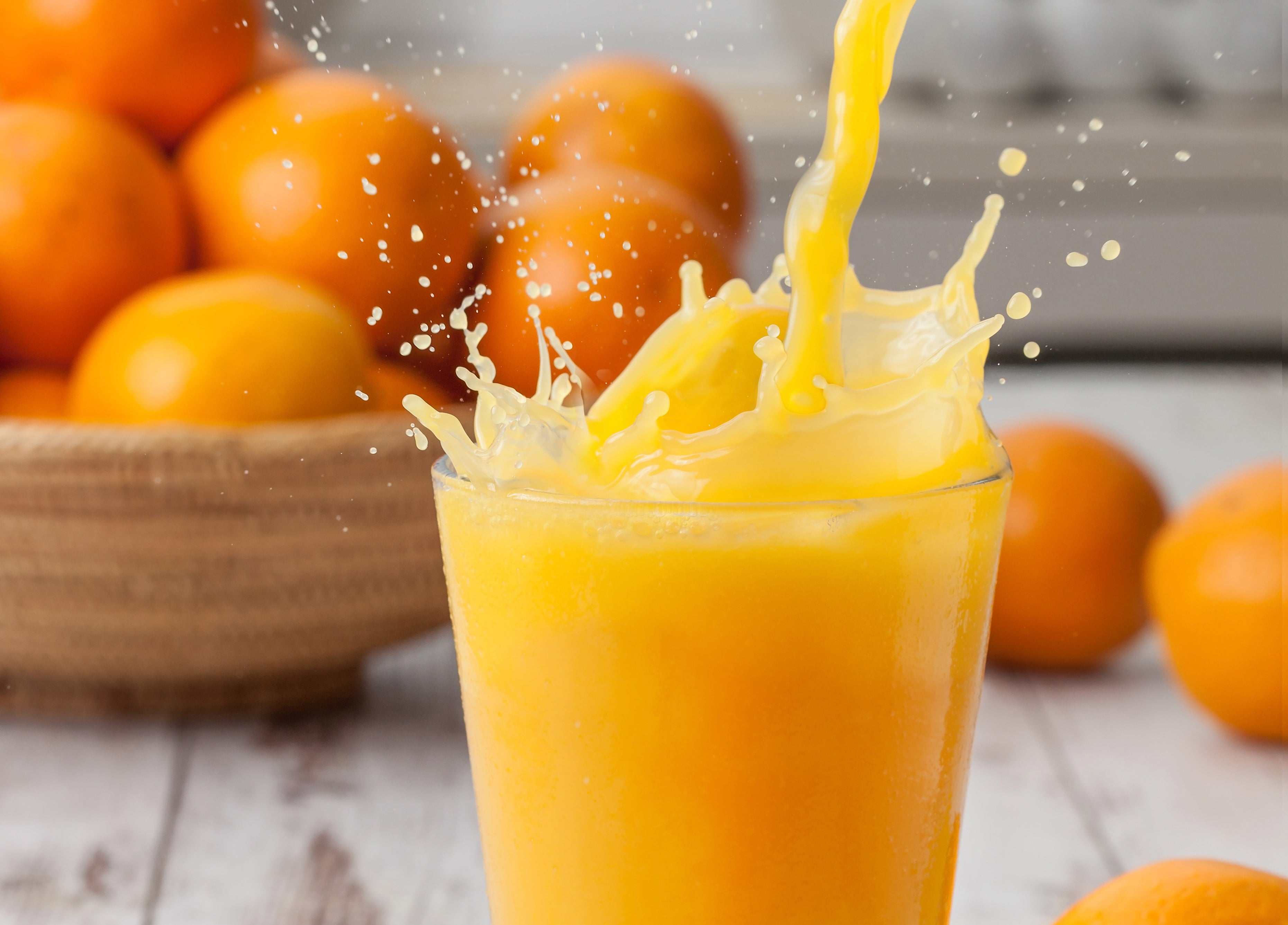How much vitamin C is in pure orange juice and why is glass transparent?
We explore the curious questions that science can answer

How much vitamin C is found in pure orange juice?
A litre of orange juice contains about 300 milligrams of vitamin C, which is five times the recommended daily dose for adults.
Why does metal feel colder to the touch than plastic when they are both at room temperature?
Your body temperature is about 37C, and room temperature is about 20C to 25C. This means heat from your body is transported to objects you touch. Metal conducts heat better than plastic, so it conducts that heat away from you into the metal more quickly than plastic does. If both materials were at body temperature (or rather, skin temperature) you would probably not feel a difference, since no heat would be transferred.
Are luminous watch faces dangerous?
Not now. But about 40 to 45 years ago it was common to use radioactive radium paint to make parts of wristwatch dials luminous. This posed a health hazard – particularly to the dial painters, many of whom developed cancers. The watch industry eventually acknowledged the hazards, and so turned to tritium (radioactive hydrogen) and phosphor paints for luminescence.
This technology is still used by some watchmakers, though a better technology now uses tritium gas enclosed in glass vials, which excite or activate a phosphor coating to provide a self-illumination. This minimises any hazard, since the tritium gas cannot penetrate the glass vial; if a vial is broken, the gas simply dissipates into the atmosphere.
What are cellophane and Sellotape made of, and do they decompose?
“Sellotape and cellophane are made from natural cellulose which comes from soft woods. They will degrade, but not all that readily. Factors such as temperature, humidity, acidity and microbial activity control how fast they degrade outside. In a tropical rainforest Sellotape will degrade within months. In a British compost heap it could take years.
How do rechargeable batteries work?
Normal batteries are actually distorted and largely destroyed in the process of making electricity.
In the recharging process, a current from an outside source is pushed through the cell in a direction opposite to that from which it was drawn originally.
This reverses the reaction that happened during discharge, restoring the anode to its metallic state, reoxidising the positive electrode.
Nickel-cadmium rechargeable cells comprise alternating layers of porous, negative cadmium anode and porous, positive nickel oxide cathode separated by absorbent layers, all permeated with electrolyte and all inside a nickel-plated steel case. Both the cadmium anode and the nickel oxide cathode material are contained in plates. The plates are conductive, increasing efficiency. Because of this design, the anode structure is not seriously distorted as the cadmium is oxidised, nor is the cathode structure as the nickel is reduced. This gets over the biggest problem of recharging batteries – the distortion.
What is the name of the superabsorbent material in nappies?
The material in nappies that absorbs urine is sodium polyachromade. It starts off in the nappy as a powder and can absorb 30 times its weight to become a gel.
Why do batteries that are running down recover slightly if you don't use them for a while?
In a copper-zinc battery, a copper plate and a zinc plate sit in a dilute sulphuric acid solution. When the battery is working, small bubbles of hydrogen gradually form around the copper plate and prevent the flow of charge. When the battery is disconnected, some of the hydrogen disperses slightly. When you use the battery again, there is less hydrogen to block the flow of electrons, so, for a short while, the battery will work again. Then the hydrogen builds up, and again the battery fails to work.
Why is glass transparent?
Normally, when light hits something it excites the electrons within its atoms and these then de-excite giving out light of a certain wavelength, which relates to the colour that we see. Atoms have levels and the electrons are excited between them. With transparent materials, these levels are so far apart that light does not possess enough energy to excite the electrons and so the light passes straight through without interacting with the material.
How can soft leather sharpen a razor?
As a blade is used, its edge is dulled – a “burr” is formed on either side that widens the blade. This makes it blunt. By dragging the blade across a leather strop the burr can be removed to give it a thin edge again. Strops aren’t so effective on thicker blades such as scissors because the bulk strength of the material is greater. However, strops can be more effective on carbon steel knives and scissors because the carbon steel is weaker than stainless steel.






Join our commenting forum
Join thought-provoking conversations, follow other Independent readers and see their replies
Comments